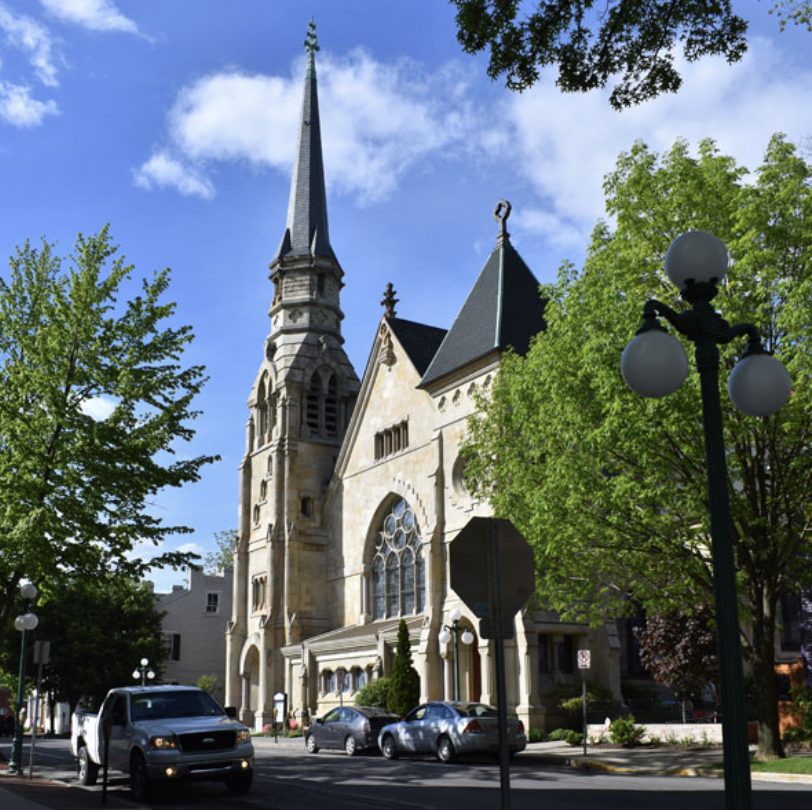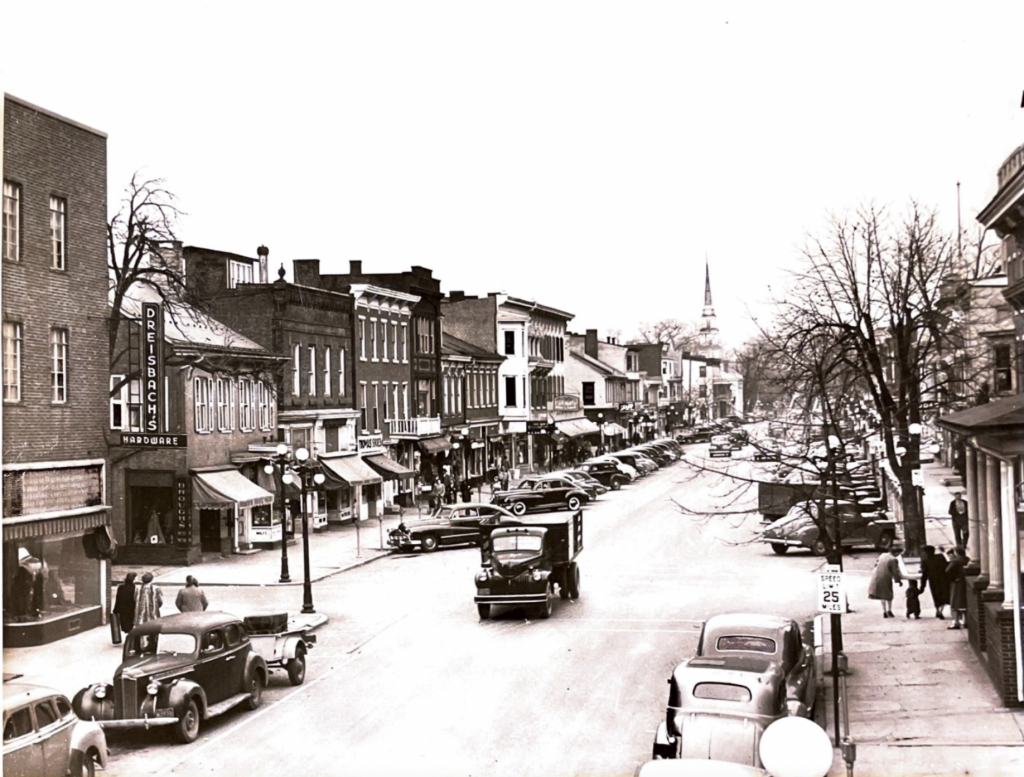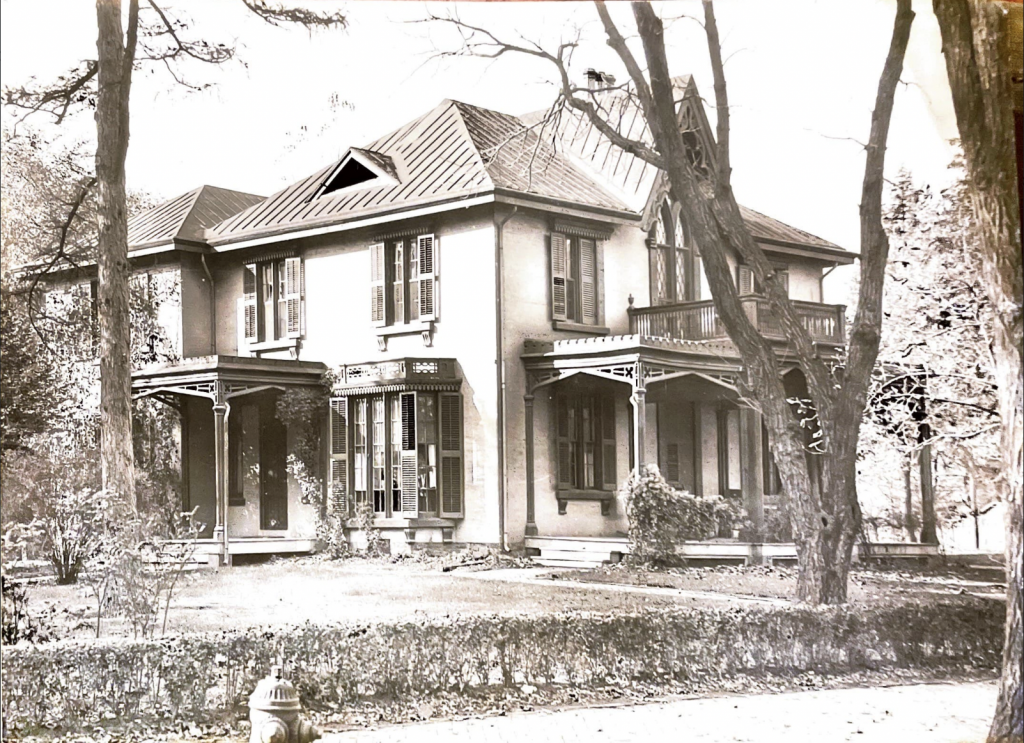The United States shocked the world when it declared independence from Britain in Philadelphia, 1776. Just nine years later and approximately 150 miles northwest, the town of Lewisburg was established. Today, many buildings that stood well over two centuries ago still line the streets, and the Lewisburg Historic District does not plan on changing that.
871 historic structures sit within the small district. The earliest buildings date back to the age of Colonial Pennsylvania, many constructed of 18th-century log, stone, and brick. However, what visitors tend to first notice when they walk down the infamous Market Street are the tall, green, three-bulb lamplights.

Borough Manager William Lowthert broke down the history of Lewisburg’s most iconic structures, “They originally started on Market Street which is where the market was. It’s changed style over time. The one that’s over by the kiosk is black which was the original color of the lights” explained Lowthert. “Also, the globes themselves are now plastic so when they fall off, the odds of of them breaking are a lot less… certainly a lot less for them hurting anybody.”
The lamplights are representative of architectural styles from the early 1900s, but what makes Lewisburg so special is the variety of architecture from multiple time periods. Common styles include Federal, Greek Revival, Gothic Revival, Early Italianate, Romanesque Revival, Classical Revival, Late Italianate, Gothic Victorian, Colonial Revival, Tudor Revival, Neoclassical Revival, Georgian Revival, Art Deco, mid-century Modern, and others.
A group of church spires act as the borough’s skyline and can be seen from all parts of town. According to Lowthert, the best known churches include the First Presbyterian Church of Lewisburg, the First Baptist Church of Lewisburg, and the Beaver Memorial United Methodist Church. Each structure has its own style originating from Europe.

Ted Strosser, head of Lewisburg’s Historic Architectural Review Board, feels that the majority of buildings in the Lewisburg Historic District were Federal style before becoming highly Victorianized in the late 1800s. Yet, places such as the Campus Theatre and the Bucknell University Barnes and Noble were built in the 1930s. Other buildings have even more recent backbones.

On the corner of Market Street and North Second Street lies the 170 year-old Lewisburg Hotel, a prime example of multiple architectural styles joining together. While the steep roof with dormers was recently built in the 1990s, much of the interior was designed decades earlier.
“The most prominent feature obviously are those columns along the front” Strosser commented. “Really the lobby and dining room are the most important aspects of that building. The woodworking in there is pretty nice.”
Ted Strosser explains the Lewisburg Hotel and architectural style of the Historic District

The Lewisburg Hotel used to serve as a banquet location for Bucknell University graduates before being outgrown in size. After briefly closing its doors in 1992, the hotel reopened in 1997 to act as both a restaurant and a place for business travelers to stay.
Like Lowthert, Ted Strosser also believes the mix of architectural styles gives the borough its richness, although he says it is not what sets Lewisburg apart from the surrounding towns. The street network is what makes Lewisburg unique. The alleyways behind the properties of the historic district hold power lines and utilities. That way each main street can have a sidewalk next to grass strips of surface lampposts and trees.

Lewisburg takes huge measures to ensure no business or resident changes the character of the Historic District. The Historic Architectural Review Board will review any exterior changes a property owner wants to make that face the street. The board then decides if the change is appropriate.
“We’re pretty lenient and open to modern upgrades as they’re needed” Ted Strosser reassured. “You know, if a building needs to put a handicapped ramp on it to make it accessible, we typically don’t say no.”
Ted Strosser discusses the Architectural Review Board rules for the Historic District
The review board encounters problems when property owners want to demolish and rebuild structures. This often involves the carriage houses that are visible from the street. These houses and their accompanying alleyways were not built for modern automobiles, but for horse and carriages. The review board then has to recognize that these buildings are falling apart, while attempting to maintain the aesthetic of the structure.
Bucknell University has become a major contributor to the appearance of Lewisburg’s Historic District. It continues to buy structures such as the Chamberlin Building downtown for university offices, while molding its classroom buildings and dorm halls to fit Lewisburg’s atmosphere. The university works with the Architectural Review Board to avoid any violations to new structures.
A stroll down Third Street will bring about the Bliss-McClure House, which took in fugitives traveling the underground railroad around the time of the Civil War. Next to that structure is the President’s House, where University President John Bravman resides with his family.

The President’s House was erected in 1879 by former university president Justin Ralph Loomis. Trees line the house across from multiple gated walkways. The house is furnished and decorated in a style that represents the Victorian period. A separate living quarters was built over the garage in 1949 for the maid and cook.
Such a historic town requires a piece of its diverse culture to be at every corner. Bucknell University, Market Street, Lewisburg neighborhoods, and the borough work together to ensure its the town’s heritage is preserved, and the nation’s ever-evolving culture is rediscovered.
To read more about the Lewisburg Historic District, please feel free to check out the works available at Bertrand Library and online below in the bibliography.
Bibliography:
Bucknell University. “Lewisburg Architecture Project.” 2008, Accessed 1 May 2024.
Lewisburg Downtown Partnership. “Downtown Lewisburg History.” Lewisburg Downtown Partnership, 2024, www.lewisburgpa.com/history/.
Theiss, Lewis Edwin. Centennial History of Bucknell University, 1846-1946. Grit Publishing Co. Press, 1946.
Leave a Reply